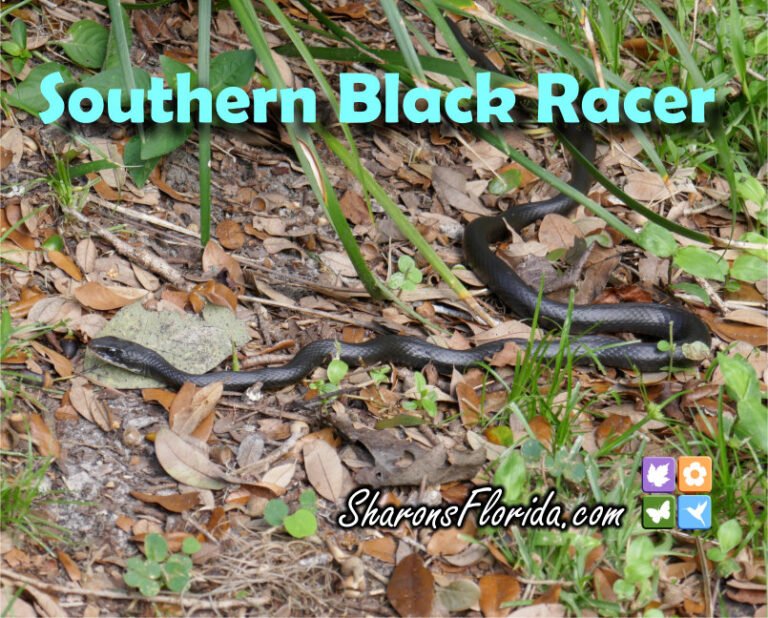
Southern Black Racer
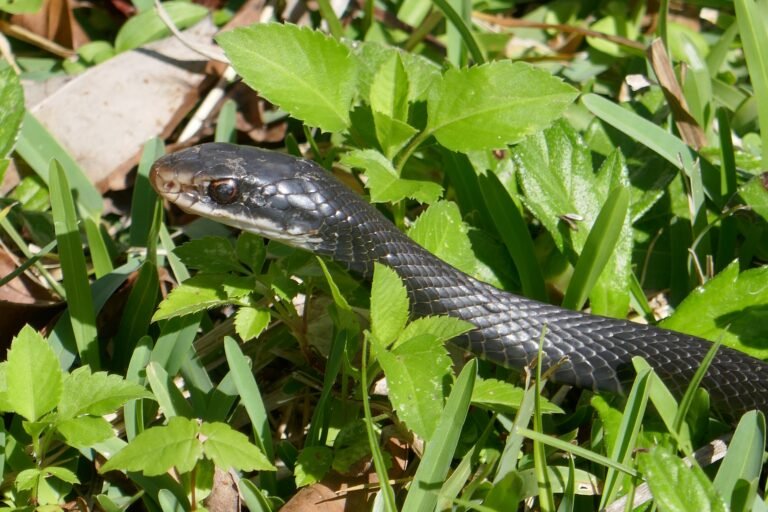
The non-venomous southern black racer (Coluber constrictor priapus), is one of the most common snakes in Florida and likely one of the most seen because they are very active during the daytime. They are very good at making suburban neighborhoods their homes and are quite proficient at pest control because they are always on patrol for prey.
Having said that, they are one of our grumpier snakes and do not like to be handled and will strike and bite aggressively. Given their behavior, they are poor candidates for keeping in captivity. They have a very smelly musk that they emit when in fear or someone is trying to handle them. If you find one in your garage, the best approach is to coax it towards the open door with a broom or other object rather than attempting to handle it.
This is not to make you afraid of black racer, but rather to teach you what to expect when you find one in your green space.
Description
The southern black racer is generally two to five feet in length. The record length is 70 inches.
They have large eyes with a dark brown iris.
They are long and slender and are satin black to a slate gray with a white chin. Their bellies are slate to blue gray.
The juvenile southern black racer has brown splotches down the middle of the back and dark specks along the sides and underbelly with their overall color being dark gray.
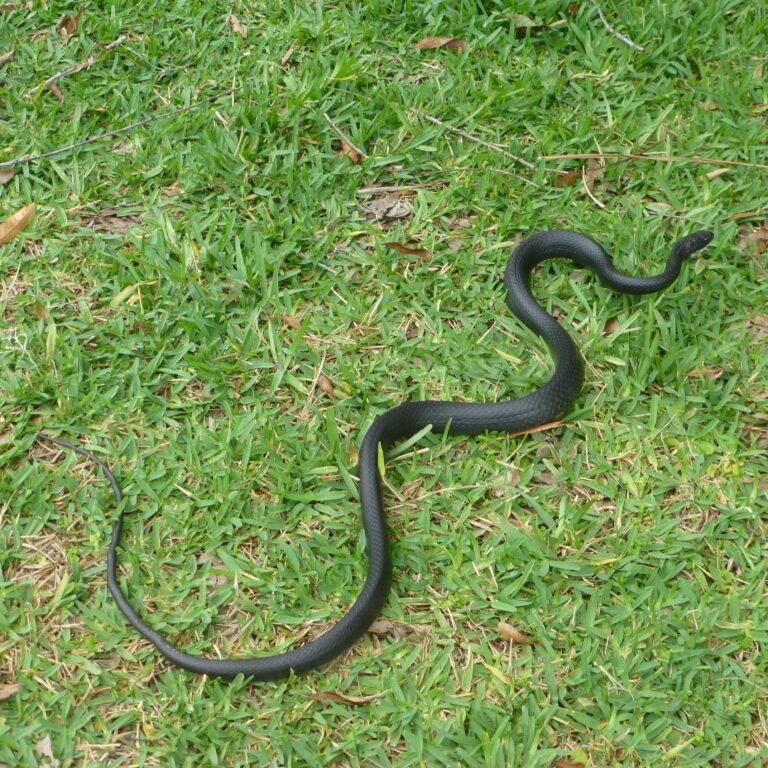
Names & Family
Most people refer to it as the black racer but technically it is called the southern black racer.
Its Latin name is Coluber constrictor priapus.
The southern black racer occurs throughout the entire state.
It is part of the Colubridae family along with other snakes such as the Florida crowned snake, rat snakes, king snakes, and hog nosed snakes.
The Colubridae family is the largest family of snakes with 249 genera.
In Florida we have three subspecies of Coluber … the southern black racer (Coluber constrictor priapus), the brown chinned racer (Coluber constrictor helvigularis) found in the panhandle, and the Everglades racer (Coluber constrictor paludicola) which is found in the Everglades and northern Keys.

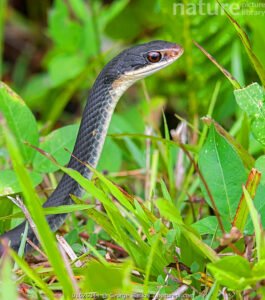
Behavior
They mind their own business traveling through their territory looking for prey. They are diurnal so they hunt both night and day so don’t be surprised to see one cruising through your lawn in the middle of the day.
They are one of our grumpier snakes and do not like to be handled and will strike and bite aggressively. Given their behavior they are not good snakes for keeping in captivity because it is stressful for the snake and the handler.
They have a very smelly musk that they emit when they are in fear and someone is trying to handle them. If you find one in your garage the best way is to coax it towards the open door with a broom or other object rather than trying to pick it up.
If they fear you they will raise their head about a foot off the ground and rattle the very end of their tail. They are just speaking snake language and telling you they are scared and to please leave them alone.
Habitat
The black racer’s preferred habitat is forests, pinelands, open woodlands, grassy areas, disturbed sites, hammocks, open prairies and cypress strands. They really love areas near water of any kind be it a stream, creek, lake, pond or any riparian area.
Of course they also love cohabitating in human green spaces.
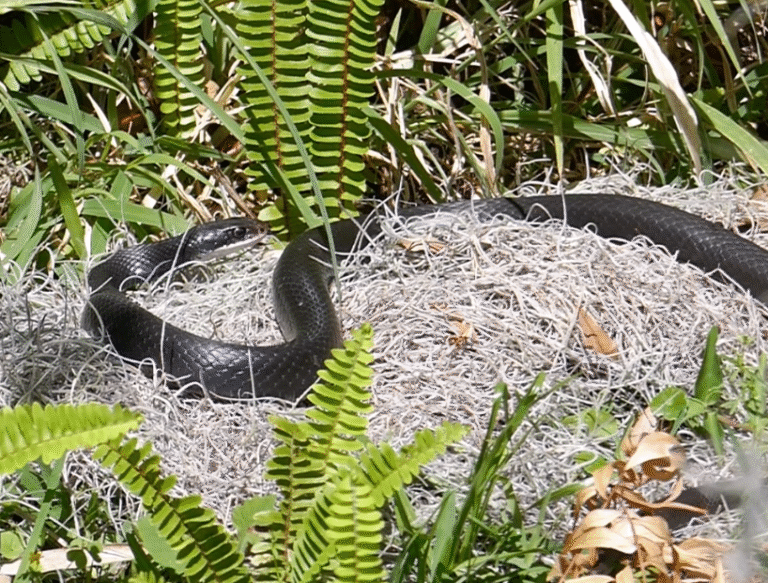
Range
Racers are found throughout the eastern United States from southern Maine to the Florida Keys.
The southern black racer is found throughout Florida.
In Florida we have three subspecies of Coluber … the southern black racer (Coluber constrictor priapus), the brown chinned racer (Coluber constrictor helvigularis) found in the panhandle and the Everglades racer (Coluber constrictor paludicola) which is found in the Everglades and northern Keys.
Food
Although one of their Latin names is constrictor they generally do not use constriction to dispatch their prey. They typically try to hold their prey down and get a grip on it with their jaws. Once that happens the prey rarely escapes.
They are always on the hunt for lizards, frogs, birds, bird eggs, smaller snakes, rodents, large insects, and will eat anything they can overpower.
When hunting in a lawn they will usually move across the area with their head raised up off the ground to get a better vantage point for spotting prey.
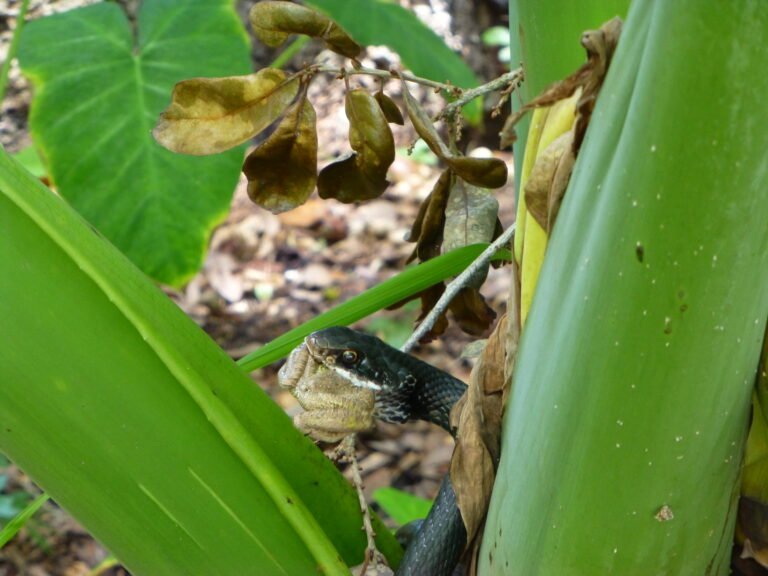
Nesting & Young
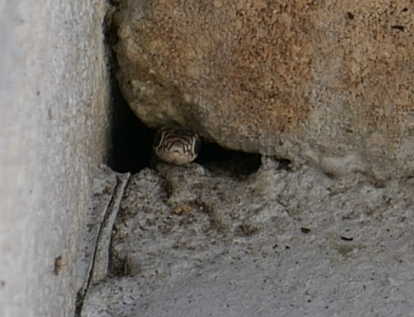
Southern black racers breed in early spring and the female is ready to lay eggs in early spring to early summer. Her clutch can consist of seven to 22 eggs. “eggs are deposited in rotting stumps, logs, and old sawdust piles from mid spring into the summer. The eggs are oval, white, and have a rough surface. Hatching occurs in about sixty days”. [1]
She will also lay eggs underneath structures such as walkways or materials left around and not used often such as sheet metal or plywood.
The juvenile southern black racer has brown splotches down the middle of the back and dark specks along the sides and underbelly with their overall color being dark gray.
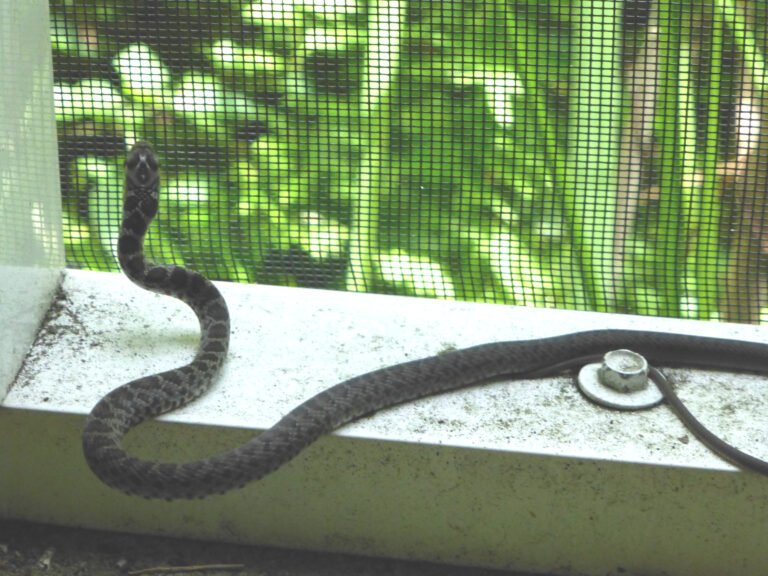
Conservation
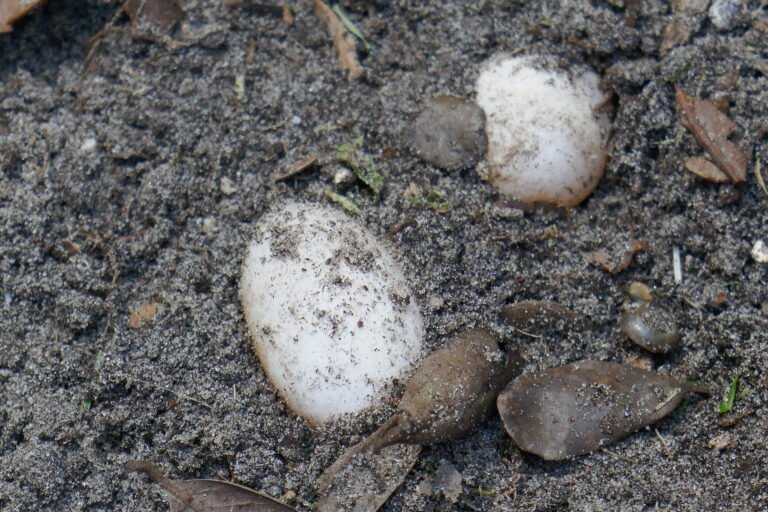
Avoid the use of pesticides. Avoid killing their natural prey so they can thrive in your green space. As with most wildlife habitat loss is the number one threat to their survival.
If you find eggs do not move them unless you absolutely have to.
DO NOT rotate the eggs if you have to move them because it will dislodge the embryo inside and it will die. So if you have to move them do so very carefully by placing them in the exact position you found them in … keep them in that position as you are moving them and keep them horizontal. I would suggest a box with some sand so the eggs won’t move and can be snugged into the sand just as they were found.
When placing them in their new site do the same thing … no rotation … move them gently and horizontal. More eggs will survive to hatching if you follow these rules. NEVER rotate reptile eggs when you are moving them .. please … and try to replicate the original nesting site as closely as possible. If it was covered by metal or ply wood then use the same material if possible.
If you locate them underneath a walkway or deck it is best to just let them be and hatch naturally if at all possible. They hatch in about two months so maybe you could hold off on your project until the babies hatch.
Footnotes: [1] Ashton, Ray E. Jr. and Patricia Sawyer Ashton., Handbook of Reptiles and Amphibians of Florida Part One The Snakes. Windward Publishing. 1988.
